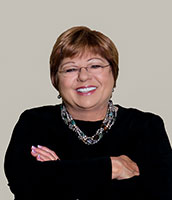May 14, 2019
By Rosemary Coates and Imran Vakil
“Imitation is the sincerest form of flattery,” quipped Charles Colton, an English cleric and author. But imitating and counterfeiting brands cause massive losses to brand owners, and are not sincere flattery.
Brand names communicate value to consumers and often represent status, wealth, and fashion. Building a brand name requires time, money, and enormous effort on the part of the brand owner. Consumers trust brands to consistently deliver quality based on brand reputations and expect products with trademark brand logos and symbols to be the real thing.
When counterfeiters maliciously co-opt a high-ticket brand name, affix it to an imitation product, and reap substantial profits in the process, they are breaking the law. When consumers pay for brand-named items and get counterfeits, they are swindled out of their expectations and thereafter ascribe a lower value to a brand.
Counterfeiters are subversive. Unfortunately, these criminals do not publish statistics on the success of their black market. However, educated estimates on the size and scope of the problem indicate it is enormous and growing. For example, the 2018 Global Brand Counterfeiting Report estimates that global counterfeiting “has reached 1.2 trillion USD.” To put that in perspective, that’s about 1.2% of everything sold world-wide. In the U.S. and EU, roughly 5% of imports are believed to be fakes. It is estimated that the U.S. Customs and Border Patrol only captures 1% of all fakes imported (e.g., 34,143 seizures of valued at approximately $1.2 billion dollars in 2017).
There is a 1 in 20 chance of a consumer purchasing a counterfeited electronics, cosmetics, apparel/footwear, medicine, or food/beverage! Fortunately, brand owners do have options to stop this intellectual property theft. Counterfeiting carries significant civil and criminal penalties.
How does a company go about catching counterfeiters and make them go away? In our experience, there are two major approaches of curtailing the chain of counterfeit distribution. The process is like killing a snake. One can either lop-off this metaphorical snake’s head (the manufacturer), leading to a quick death. Or one can chop off parts of its body, (wholesalers, retailers, distribution companies), leaving the head to wither without economic nourishment. There are benefits and drawbacks to both approaches.
To cut off the head, the manufacturer must be identified – most likely in an Asian or eastern European country – and shut them down. But counterfeit manufacturers are often skilled at hiding in plain sight. Occasionally they are protected for jurisdictional and/or political reasons, sometimes with an organized crime component. So counterfeit suppliers must be very carefully approached. Shutting down a manufacturer has the most immediate positive impact in the chain of counterfeit distribution. Unfortunately, alternative suppliers typically spring up in their place.
Alternatively, cutting the body or tail involves shutting-down downstream wholesalers, retailers, and distributors, one entity at a time, requiring significantly more time and effort. But this approach has the best chances for long-term aggregate success.
Locating the actual source of counterfeit products is not straightforward. Counterfeiters will try to mask their involvement by using intermediary companies, such as trading companies, manufacturers’ representatives, and multiple importers. These supply chain links in turn, distribute to other downstream entities, such as wholesalers and distributors. While sales channels are obscured, there are still investigative ways to determine sources.
U.S. importer information is public record and must include manufacturing factory numbers. If the information is accurate, there is a pathway to identifying sources. Once sources are identified, a similar analysis can be performed to figure out to whom that source is selling. If we can find a single spoke in the hub of distribution, its often possible to find the other spokes and potentially the hub.
Finding and fighting counterfeiters is hard work and may be a relentless task. But protecting brands and trademarks, and ultimately a company’s revenue is critical to maintaining brand value. The best anti-anti-counterfeiting strategies will employ technology and a team of multi-discipline professionals, usually led by a legal team.
The best counterfeiting avoidance strategy is tight control and management of the global supply chain. Strategies should be carefully planned and executed based on the unique needs of the brand owner.
© Copyright 2019 Imran Vakil and Rosemary Coates
About the Authors
 Rosemary Coates is an Expert Witness for legal cases involving global supply chain matters. She is also the President of Blue Silk Consulting, a Global Supply Chain consulting firm and Executive Director of the Reshoring Institute. She is a best-selling author of: 42 Rules for Sourcing and Manufacturing in China and Legal Blacksmith – How to Avoid and Defend Supply Chain Disputes Ms. Coates lives in Silicon Valley and has worked with over 80 clients worldwide.
Rosemary Coates is an Expert Witness for legal cases involving global supply chain matters. She is also the President of Blue Silk Consulting, a Global Supply Chain consulting firm and Executive Director of the Reshoring Institute. She is a best-selling author of: 42 Rules for Sourcing and Manufacturing in China and Legal Blacksmith – How to Avoid and Defend Supply Chain Disputes Ms. Coates lives in Silicon Valley and has worked with over 80 clients worldwide.
 Imran F. Vakil is an intellectual property lawyer, business litigator, and Managing Attorney at Nexio PC. Having been attorney of record in over four hundred state and federal cases, Trademark Trial and Appeal actions, arbitrations, and mediations, Imran has expertise in the litigation of trademarks, trade dress, copyrights, trade secrets, patents, unfair competition and commercial disputes.
Imran F. Vakil is an intellectual property lawyer, business litigator, and Managing Attorney at Nexio PC. Having been attorney of record in over four hundred state and federal cases, Trademark Trial and Appeal actions, arbitrations, and mediations, Imran has expertise in the litigation of trademarks, trade dress, copyrights, trade secrets, patents, unfair competition and commercial disputes.
Scott Ellyson, CEO of East West Manufacturing, brings decades of global manufacturing and supply chain leadership to the conversation. In this episode, he shares practical insights on scaling operations, navigating complexity, and building resilient manufacturing networks in an increasingly connected world.